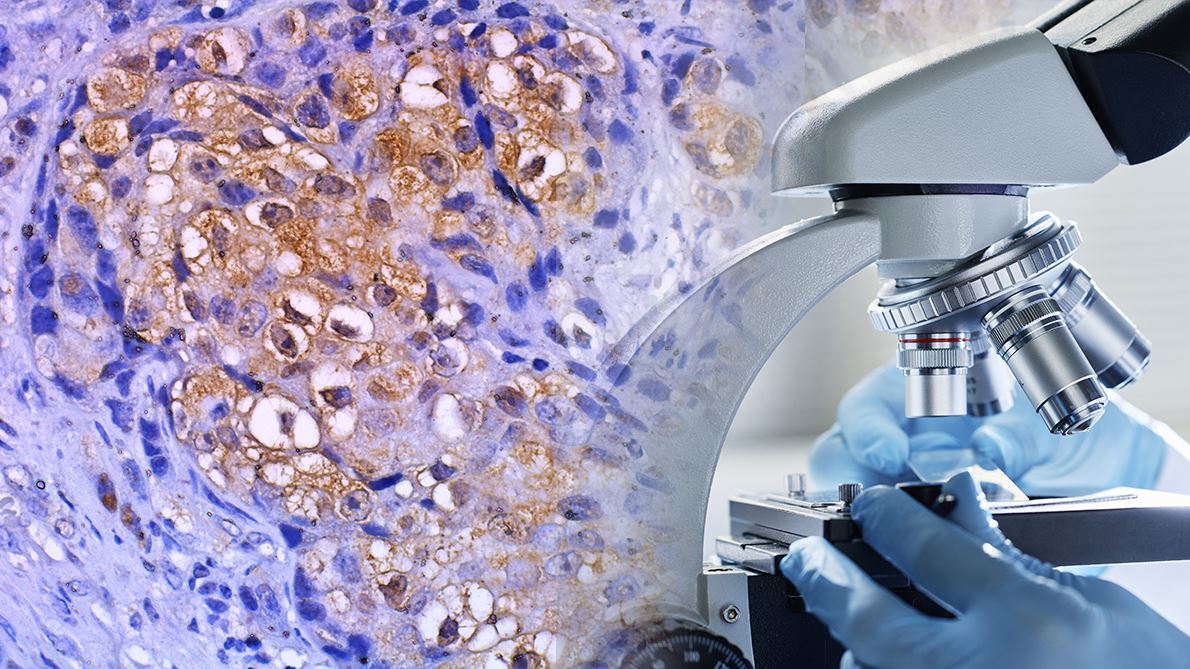Northfield, Ill. (February 23, 2024) – The College of American Pathologists (CAP) updated the “Principles of Analytic Validation of Immunohistochemical Assays” guideline to provide increased precision and accuracy of clinical immunohistochemical assays. This update assesses evidence published since the release of the original guideline in 2014 and provides new recommendations on how to analytically validate/verify immunohistochemical assays used for diagnostic and predictive purposes.
“This updated guideline provides new and revised recommendations for analytic validation/verification of immunohistochemical assays, which often guide therapeutic decision making for cancer treatment,” explains guideline chair, Jeffrey D. Goldsmith, MD, FCAP. “This guideline update serves to revise validation guidelines for all immunohistochemistry assays with particular focus on predictive markers; major changes to validation of immunohistochemistry assays performed on cytology specimens are also included.”
Validation Recommendations
While many of the original guideline statements remain similar, there are several new recommendations which provide guidance for validation/verification of IHC assays performed on cytology specimens and predictive marker assays that have distinct scoring systems, such as programmed death receptor-1 (PD-L1).
For initial analytic validation/verification of every assay used clinically, laboratories should achieve at least 90% overall concordance between the new assay and the comparator assay or expected results. This guideline revision also applies to estrogen receptor (ER), progesterone receptor (PR), and human epidermal growth receptor 2 (HER2) IHC performed on breast carcinoma, also reset at 90% concordance, superseding the previously different concordance thresholds. This recommendation harmonizes validation requirements for all immunohistochemical markers.
“Although the systematic review did not identify substantive new literature, the numerical considerations and modeling discussed in the initial guideline document remains relevant,” states Dr. Goldsmith. “If validation/verification yields unexpected results, the causes should be investigated by the immunohistochemistry medical director."
Another strong recommendation pertains to predictive marker assays, such as HER2 and PD-L1, in which more than one scoring system is used. The recommendation stipulates separate validation/verifications based on antibody clone/scoring system combination.
Additional specific guidance is offered for validating immunohistochemistry performed on cytology specimens.
These updated recommendations, now available in an early online release in the Archives of Pathology & Laboratory Medicine, were established through the assessment of evidence published since the release of the original guideline in 2014.
Current tools, resources, and information for the Principles of Analytic Validation of Immunohistochemical Assays: Guideline Update can be found on the guideline webpage on cap.org.
About the College of American Pathologists
As the world’s largest organization of board-certified pathologists and leading provider of laboratory accreditation and proficiency testing programs, the College of American Pathologists (CAP) serves patients, pathologists, and the public by fostering and advocating excellence in the practice of pathology and laboratory medicine worldwide. For more information, visit the CAP Newsroom, CAP.org and yourpathologist.org to watch pathologists at work and see the stories of the patients who trust them with their care.
###

